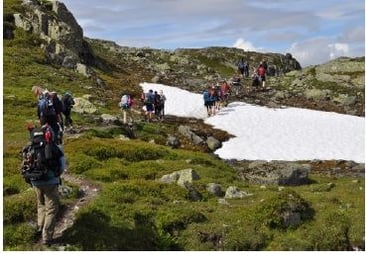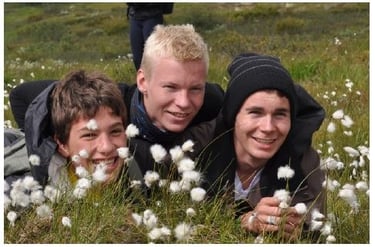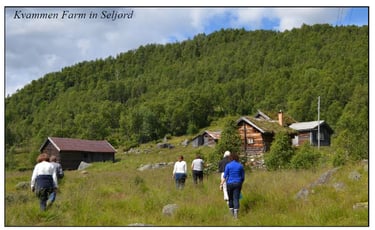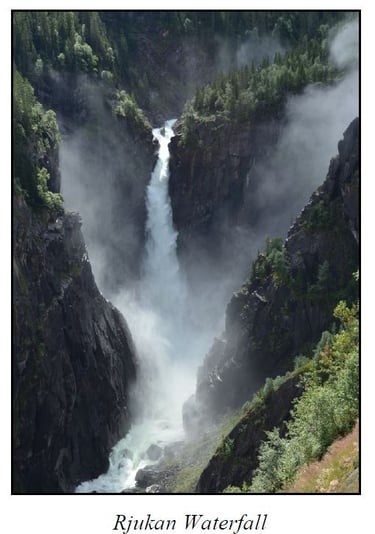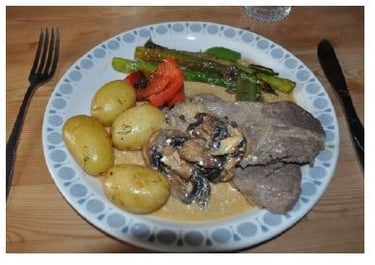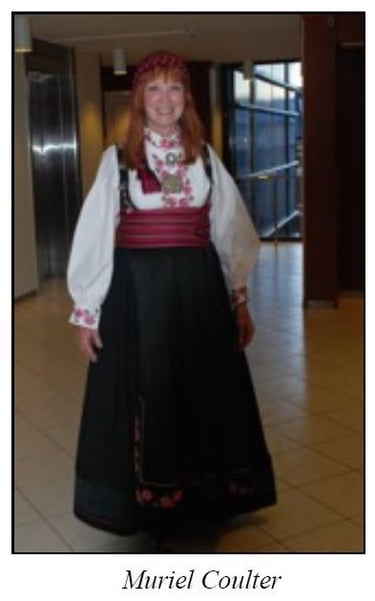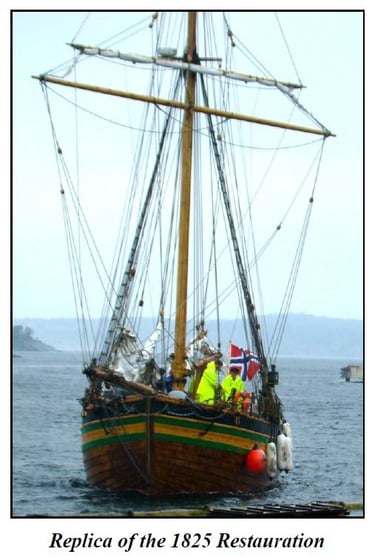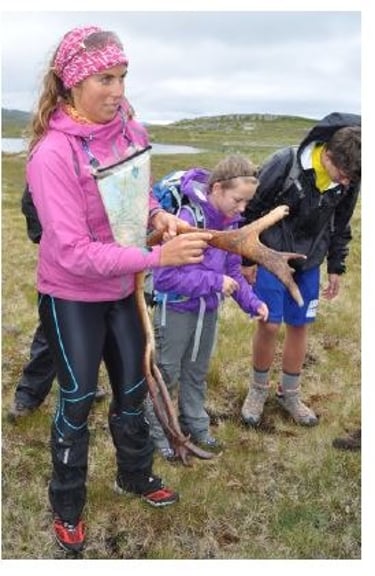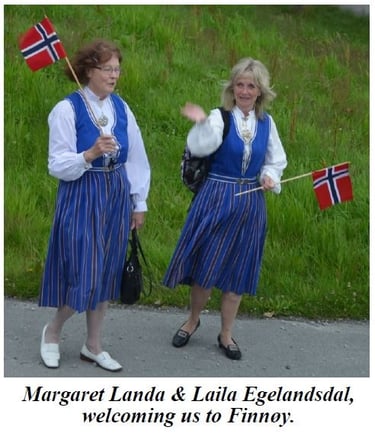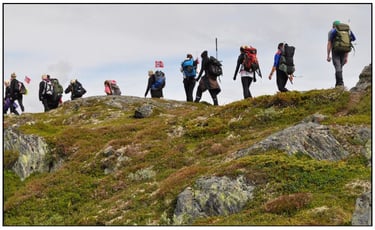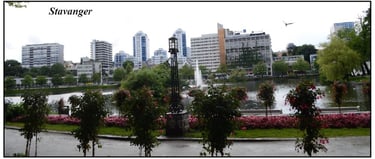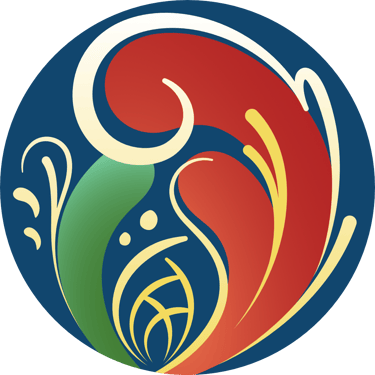Telelaget's 2012 Pilgrimage to Telemark
TOURS
Alice Stangeland Kirn
11/19/201217 min read

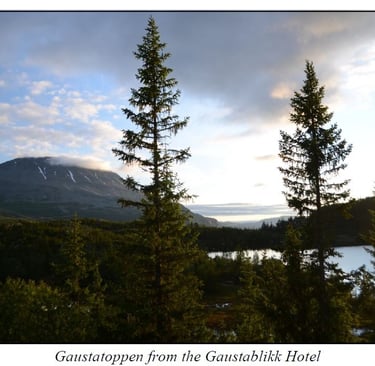
Often had I dreamt it, oftener wished it, but never fully believed it. Now when it was really going to happen, it seemed too good to be true.
- N. N. Rønning
These are the opening words from the book A Summer in Telemarken by N. N. Rønning, who emigrated from Bø in 1877 at the age of 17. He was educated at Faribault and Red Wing schools and at the University of Minnesota. He made his living as a teacher and writer. He loved America but never forgot the country of his birth. His love of Telemark made him a strong supporter of Telelaget, serving on the board in various capacities, organizing stevner, and editing bilingual editions of
Telesoga into his eighties. His many books not only provide us with emigrant history but also reveal the influence of his early years in Telemark. The Saga of Old Muskego and A Summer in Telemarken are two of his books that I have read and re-read. Reflecting on our recent tour, I have used excerpts from the latter to show how amongst progress and modernization, some things never change.
Only once was Rønning able to return to his beloved Telemark, and this was in the summer of 1899. It was a long voyage home. He left from Boston, a seven-day trip by steamer to Ireland, which he describes as a calm, peaceful ride. This was followed by a rough ride in the North Sea on a small steamer to Kristiansand. Then twelve more hours by steamer to Christiania (Oslo), where he had expected to meet his brother Halvor and his family who were visiting from China. As it turned out, Halvor had arrived earlier and gone on to Bø. After two days in Christiania, he boarded a train to Skien and from there, a tiny steamer to Aarness, twenty English miles up the fjord, and seven miles from Bø, his home. At Aarness a young boy with a horse took him the final seven miles.
For many years now our Telelag tours from America to Norway have been an easy overnight flight with a comfortable well-equipped bus waiting to transport us to our various destinations. Quite a contrast from 1899 when there were no planes or motor transportation, when city traffic consisted of horse-drawn carriages, and hotel rooms were lit by candlelight. What hasn’t changed is the traveler’s anticipation and great excitement when the coast of Norway comes into view. “Let the old steamer roll to its heart’s content,” Rønning writes, “let the wind blow and burst its cheeks, let the spray leap mast high! What care we! There is Norway.” And for the final seven miles of Rønning’s journey, the horse could not go fast enough. He stopped first at the churchyard to visit the grave of his mother. Like so many immigrants, he had hoped to one day see his mother again, but sadly that was not to be. Finally, there is a reunion with his father, brother, and other family members.
…it seemed like going home. – Muriel Odden Coulter
And this is part of the mystery of our pilgrimage. It is now many generations since our ancestors left Norway. In most cases, we were visiting the farms of great, great-great, and great-great-great-grandparents. But for all of us, regardless of the generations passed, finding and visiting our ancestral farm is at the top of our list and always an emotional experience. Muriel Odden Coulter, who had the joy of meeting relatives and visiting the ancestral farms of Odden and Brennemo, expressed what many of us feel when she wrote, “I have traveled to many places, but Norway may be the most special of them all. Being the only child of older parents with a deep respect for and
connection to Norway shaped my youth. Therefore, when I went to Norway, it seemed like going home. Traveling to Norway renewed my spirit and brought me peace.”
My 13-year-old granddaughter also sensed this feeling of “home” while we were visiting the Kornbø farm on Finnøy, the farm my grandmother left at age eighteen. “This was the home of your grandmother!” she said to me. “That’s a close relationship.” Later, at the top of her list of the things she enjoyed in Norway, was the statement, “I loved meeting my family” (3rd and 4th cousins).
We were all blessed with good health, good weather, great scenery [I will never forget the Rjukan Waterfall], but most of all the wonderful people we
met who so graciously greeted us.
– Elaine Nordlie
Evidently, Elaine forgot about the heavy rain and fog on our bus ride into Stavanger that prevented a good view of Norway’s 32-foot peace monument, “The Swords of the Rock”; the wind, rain, and cold that had us shivering on the Lysefjord; and the pouring rain that had us huddling below deck on the Restauration. Inclement weather was short-lived and soon forgotten. By the time we unpacked in Stavanger, the weather had cleared and we enjoyed a leisurely afternoon, strolling along one of the world’s most beautiful harbors, visiting the stone Cathedral built in 1125, browsing the shops, enjoying the beautiful flowers in bloom everywhere, and then sitting down to a getting-acquainted dinner at the Thon Maritim, our lodging for two nights. Stavanger, important for its herring canning in the 19th and 20th centuries, is today known as the Petroleum Capital of Norway. A guided tour of Old Town Stavanger included the Canning Museum.
Our Telemark tours have usually started and ended in Oslo. This year, however, we flew into Stavanger, mainly because this is where a recently built replica of the 1825 Restauration was docked, providing tourists a chance to experience what it might have been like for the 52 on board to cross the ocean, a 14-week trip, on a 54-foot vessel, marking the start of Norwegian emigration. Although our reservation on the sloop had to be changed to a different day and to a different harbor (Risør), this too worked out, and the pouring rain in the Risør harbor only magnified what it must have been like to be a “sloop” passenger. Feeling cramped below deck [and we were only 15 people], we listened as a guide related the story of the 52 brave souls and one newborn baby, all of whom miraculously survived the journey.
The sloop replica was built on the nearby island of Finnøy, also the home of Cleng Peerson, where so much of the early planning for the 1825 emigration took place. Our first day of touring was on this island, until recently accessible only by boat and car ferry. Today a tunnel connects the mainland. Welcoming us at the end of the tunnel were Margaret Landa and Laila Fugledal Egelandsdal, dressed in their native costume and waving Norwegian flags. The Landa and Fugledal families had arranged this welcome and, in addition, provided us with an entertaining guide. Tor Øyvind Skeiseid took us to many of the island sites including the old stone church dating from the 13th century, Cleng Peerson’s cabin, and the tunnel used by the Nazis to cache weapons during the German occupation of Norway. And, what a treat, to be invited to a luncheon at the beautiful Landa farm! The table included all the delectable dishes we have come to associate with Norway. These “wonderful” families were my relatives who so “graciously” welcomed us all. Several people from Finnøy joined us for the hiking part of our tour. This led to a wonderful cultural exchange, one of our tour highlights. Margaret Landa joined us on the bus tour and often helped us with communication.
…the valleys, the meadows, the
hillsides, there was beauty everywhere. – N. N. Rønning
Part of the mystery of our love of Norway is the incredible scenery. We found the rain, cold, and wind that ripped off Randy Twito’s hat and sent it whirling in the fjord waters no competition for the breathtaking scenery. Among the amazing sights along the Lysefjord cruise is pulpit rock towering 600 meters above the water, flat at the top. Even higher is Kjerag, 1,084 meters above the water. Often pictured on postcards is Kjeragbolten, a rock wedged between two mountainsides. For nearly twenty years my second cousin, Captain Neil Falkeid (Margaret Landa’s brother), has been taking tourists through the fjord, narrating some of the fascinating legends and history, and finding every day a bit different from the previous one. Not always visible are the seals, which we were able to snap pictures of. Disembarking at Lysebotn, Øyvind Andersen, our bus driver, took us through what seemed like endless hairpin turns, to the Eagle’s Nest, the summit, where we ate lunch and had a group picture taken, with the majestic view of the fjord water 900 meters below us. Walking among the rocks, gazing at the awesome panoramic view, snapping pictures – it was an area we reluctantly had to leave.
The Rjukan Waterfall and Mt. Gausta! Wow! Rønning had been here too. "To come all the way from China and America," Rønning writes, "and then to loaf all summer in Bø would hardly do." He and his brother decide on a trip to Tinn, first to see the Rjukan Waterfall and then to climb Mt. Gausta on the steepest side. This was 1899 and quite a journey from Bø. They went some of the distance by carriage, some by steamship, and then on foot for an excellent view of the waterfall. At that time there was almost always an impressive flow of water. Since 1911 the water has been diverted to the Vemork power station. Occasionally the water is released, and when it is, the flow is more beautiful and impressive than ever. On our way to the Industrial Worker’s Museum, we were present on one of those lucky days. Our driver found a place to park the bus and a short hike took us to the 338 ft. roaring falls.
Our stay at the Gaustablikk Hotel provided us with fantastic views of Mount Gausta both at sunset and sunrise. Although none of us climbed Mount Gausta, twenty members of our group, both Norwegians and Americans, with guides Harald Omnes and Tone Jorunn Tveito, spent four days hiking in the mountains of northern Setesdal and northwestern Telemark. There will be more about this in the last section of this article. We left our hikers in Hovden and met up with them again in Oslo, but not before enjoying dinner together at the Hovden Hotel, where the hikers were all introduced and Harold and Tone in their bunader performed for us.
Traveling in a comfortable bus made it possible to go great distances and to see many places. A memory album is being assembled with pictures of all our participants and of the various places we visited. I will mention the places here in less detail. Approaching Telemark, we stopped at Rygnestadtunet, a Viking-age farm with ten buildings, unoccupied since 1919 and today under the care of the Setesdal Museum. This is one of Darrel Johnson’s ancestral farms and the inspiration for his current genealogy column. One of our two guides at Rygnestadtunet entertained us by playing an old tune on the mouth harp, a popular instrument in Setesdal.
What a thrill to visit the boyhood home of Aasmund Vinje, Telemark’s great lyric poet. Nearby at the Vinje school is a life-size statue of Vinje. Olav Nordstoga, the present owner of the farm where Vinje was born, told us the story of the “little log house” and the great poet who grew up there, a moving presentation. Olav’s son, Aasmund, a nationally known musician and radio personality, sang songs with lyrics written by Aasmund Vinje. Some of us joined him as he sang “Blåmann, Blåmann,” Vinje’s poem set to music by Edvard Grieg. Telelaget literature has many references to Vinje. Among them is LaVonne Houlton’s two-part story of his life [Telesoga, vols. 25 and 26, November 2004 and May 2005]. LaVonne, a descendant of Vinje, died in 2009.
The Heddal Stave Church has been a stop on all of our tours. There are only 28 stave churches remaining in Norway today. The Heddal church is the largest and has been carefully preserved. Our Telemark Telelag director, Anne Haugen Wagn, met us here, introduced our guide, and also arranged for us to visit the barn church sanctuary, a modern structure used for worship during the winter months. Olav Sem gifted us, as he has in the past, by singing old hymns from this parish. For pictures and more information on the Heddal Stave Church and the Parish Barn Church, see Elaine Nordlie’s article in Telesoga, vol. 22, November 2001. In Skien, the capital of Telemark, we were greeted at our hotel by Terje Riis Johansen, the mayor of Telemark County. We were also introduced to Ingjerd Stulen, our newly appointed Telelaget director in Skien. Skien is the childhood home of Henrik Ibsen and near our hotel was a sculpture of the great dramatist and also some of the characters he created in his plays The Wild Duck, Peer Gynt, and Little Eylof. Nearby is Brekke Park, Telemark’s largest museum. We had a guided tour by the museum’s curator, Tor Kjetil Gardåsen, of many traditional Norwegian buildings, some with extensive rosemaling. Among the many interesting museum artifacts was a fiddle made and carved by Karl Mathiasson Rui (1743-1839), an ancestor of our tour guide, Elaine Nordlie.
Our last stop on the way to Oslo was at Lier Bygdetun, a touching visit, especially for those of us whose family history connects to the Muskego settlement in Wisconsin. Even Heg, who had been an innkeeper in Lier, emigrated with his family in 1840. He was a leader in the Muskego settlement. The large barn that he built became in a sense an “inn” for immigrants. Among his many benevolent acts was providing the property for the Old Muskego Church. He and his wife both lost their lives to the cholera epidemics that plagued Muskego. Their son Hans Heg, also a leader, organized the 15th Wisconsin Regiment in the Civil War. Killed in the battle at Chickamauga, he is remembered as a hero. The Lier Kommune has remembered both father and son. The one-time inn of Even Heg was demolished and rebuilt on Lier Bygdetun. Our guide, Knut Anderson, spoke to us here and also showed us the Heg Statue at Haugestad in Lierbyen, a gift from Norwegian Americans to the people of Norway.
…Christiania, the capital of Norway, the city St. Olaf built, famed far and wide for great events and gifted men,
the city which so often has been called “Norway’s beating heart.
— N. N. Rønning
Rønning’s visit, just like ours, included a stroll up Karl Johann Street to the Palace. Rønning had been to Oslo only once in his youth. Few people from his parish had ever been there. It was a place for the elite. Today, however, Oslo is a great tourist attraction for all people. With bus and driver available for two days, some of the places we visited were Holmenkollen, the Viking Ship Museum, the Fram Museum, Peace Museum, which is fairly new, the Resistance Museum, City Hall, and the Harbor. Some of us walked on the roof of the new opera house, and most of us watched the changing of the guard at the Palace, which was only two blocks from our hotel. I don’t think any of us missed a stroll through Vigeland Park, non-existent in Rønning’s day, covering 80 acres and displaying 214 sculptures of life-size figures of humans in various situations and relationships.
More kind and hospitable people cannot be found on earth.
— N.N. Rønning
Among all our wonderful experiences, above all, is a desire to connect with our ancestral farm and living relatives. In many cases, it was our relatives who so obligingly helped us locate farms. In other cases, we were provided with guides, thanks to the preliminary planning of Elaine Nordlie, Harald Omnes, and Anne Haugen Wagn. We were invited into homes, and when possible, friends and relatives joined us for dinner at our hotels. Tor and Eva Erdahl, relatives of the Butlers and Melaases, dined with us at our very first dinner in Stavanger. John Haugo had relatives at his table and he, along with his daughter and three granddaughters, spent a day visiting relatives. Other table guests included Anne Haugen Wagn and Svein Erik, Ingjerd and Bjørn Stulen in Skien, Tor Gardåsen, the museum curator at Brekke Park, and Torbjørn Greipsland, a writer from Askim in Østfold. Margaret Landa from Finnøy joined us for the entire tour.
Whether a relative or someone heretofore unknown to us, we encountered hospitable people. Tom Johnson, a silversmith teacher in Minnesota and Arizona, did not have ancestry in Telemark [his wife Dorothy did]. He visited Telemark silversmiths: one in Rjukan, one in Kviteseid, and one in Skien. Tom was excited to learn a new technique from the silversmith in Skien.
We all have stories to tell. I will make reference to a few of them. Other stories will be collected in our memory album along with photos.
Heart-warming surprises happen often on our tours. Muriel Coulter came to our final dinner in Oslo, dressed in a beautiful East Telemark bunad that had a border of pink flowers and adorned with silver jewelry. She had been visiting her second cousin, Olav Overland, and his wife Line. Line had insisted that she wear her bunad for the farewell dinner.
What a surprise for Muriel when on the visit to her great-uncle’s farm at Brekketo, she spotted a picture of her own farm near Granite Falls, Minnesota. Her grandfather, the original owner, had sent it to his brother long ago to show him what an American farm looks like. Yet another surprise for Muriel was meeting the present owner of Brekketo, Birte, a cousin Muriel never knew she had but now felt quite close to. The Brekketo farm is located high in the mountains on the east side of Lake Seljord, where Muriel was served coffee and a delectable dessert.
Olav Forstøl and his brother Tarjei, a genealogist, were the friendly guides who took Jean and Cliff Anderson to visit the upper Bergland [the name had been changed from Bjørnstad] farm. Checking out the lower farm, as well, they met Hans and Solveig Bjørnstad, who to the surprise of the Andersons, are also distantly related. Even though they were in the midst of remodeling, they graciously invited their visitors in for ice cream, cloudberries, and coffee. Olav and Tarjei also entertained Jim and Sara Oftelie, to whom they are related.
One more example will include my own experience. Gunnar Kleivi, a genealogist, and his wife Bjørg Oseid Kleivi, a well-known rosemaler, escorted six of us (Randy and Mary Kay Twito, John and Deanna Kirn, Alice Kirn, Margaret Landa) to the Kvammen farm near Seljord. John Haugo was with us as a driver but did not hike with us. This farm, vacant since 1955, is accessible only on foot. The Kleivis provided us all with rubber boots, that is, everyone but me. We trudged through swampy land to reach the farm, and after what seemed like forever, we reached the top of a knoll and there was the farm—all of the buildings—house, summer kitchen, stabbur, barn, hay shed, -- still intact, though vacant, spread out before us with sheep grazing and wildflowers blooming everywhere. Fourteen children were raised on this farm, one of them Jon Knutsson Kjøs, one of Telemark’s famous fiddlers, and another Anne Knutsdtr Kvammen [1758-1823], the g-g-g-grandmother that Randy Twito and I share. It was a visit we much appreciated, but there was more. The Kleivis invited us to their beautiful home, served coffee, lefse, goat cheese made by a neighbor, and delicious rolls, and gave us a lot of genealogy help. Gunnar even showed us that he is a relative. We connect two generations above Anne Kvammen. Bjørg showed us her studio with painting in progress and gave each of us an autographed copy of her book, Rosemaling: mine beste ideer. I was given a dry pair of socks and a new pair of shoes. We were driven to the farm of their daughter, where artifacts from the Stone Age have been found. All this was unexpected and overwhelming, another example of the friendship and hospitality combined with a farm tour. I have yet to write something about our chauffeur John Haugo. He was the driver of the rented car that was often needed to escort tour members to various sites. He found it quite an adventure, following the bus through mountainous hairpin turns, and keeping up with Bjorg Kleivi, a veteran driver on narrow winding roads. And then there was driving in Oslo! Suffice it to say that John and his sidekick Darrel Johnson turned in the rented car, feeling competent to set up their own guiding service in Oslo as ”all streets had become well known.”
Hiking in Norway
Outdoor sports, often daring, are endemic to Norwegians. There is cliff jumping along the fjord, precipitous climbs to the pulpit rock, where there are no guard rails, and to the stone wedged between two mountainsides. Telemark is the birthplace of skiing and the birthplace of Sondre Norheim. Morgedal is always an exciting stop on our Telemark tours. We never tire of hearing the feats of Sondre Norheim. A few of us hiked from the Telemark museum to the one-room house that he built for his wife, Rannei, in 1854.
Three times the Olympic flame has been lit from here. The Holmenkollen National Arena near Oslo, first built in 1892, and since then reconstructed 19 times, most recently in 2010, is one of Norway’s great attractions. When my grandson first saw the ski jump five years ago, he said, “It looks like suicide to me.” Today the Holmenkollen includes a museum, shops, and a ski simulator that many of us experienced. Walking has always been a part of our tours, but this year was the beginning of real hiking in Norway. Like the Rønning brothers, we added hiking to make our journey complete. Many of Norway’s hiking trails were developed by Claus Helberg [1918-2003], famed for his resistance work during Germany’s occupation of Norway and after the war, for promoting outdoor activities. He developed many of the mountain trails and helped build many of the cabins across Norway’s plateaus. He was often a guide on walking tours with the royal family. There is a statue of Helberg at the entrance to the Claus Helberg Kultursenter.
It was an unbelievable group from the first day. – Tone Jorunn Tveito
The hiking tour leader was Tone Jorunn Tveito, the well-known folk singer from Tokke Kommune. With a background in music and science, she has hiked the length of Norway and led many hikes, combining song and culture. The tour coordinator and hiking guide was Harald Omnes from Lunde. Well known for his dancing, he is also a Telelaget director in Telemark. The goal of the hiking tour, as expressed by Tone, was “to tie a bond of friendship between the generations of Norwegians and Americans.” Support was provided by the Norwegian Hiking Club Youth.
The hike began with a "get-acquainted” meeting, familiarizing the group with the Norwegian mountain landscape, clothes, shoes, temperatures, map and compass, group dynamics, and what it means to be part of a team. The schedule included what Harald called a “pre-hike” in the Hovden area on the first day, then from Hovden to Sloaros the 2nd day; from Sloaros to Holmavatn the third day, and from Holmavatn to Haukeliseter the final day, a total of 43.4 American miles.
The group stayed in cabins, enjoyed fishing and cooking together. One meal included a gourmet dinner with elg (moose) steak [Did you know that Tone shot that elg?] Tone reports that the evaluations from participants included comments on the waterfalls, “so green and clear,” the reindeer, the landscape, the mountains, etc. Some responses read, “I love melkesjokolade, veldig bra” (chocolate bars, very good), “I love Norwegian mountains – I will be back.”
A final comment from Tone reads: “We were unbelievably lucky with the weather. We saw reindeer two days. Spring in the mountains and blooming reinroser (dryas octaopetala--botanicalname). It was a wonderful group. Many had walked only day trips before. Others had not hiked in hilly/mountainous terrain and on snow. I must admit that I was a little anxious before I met them. They had received the list of hiking supplies and hiking plans. But what should meet me? I am not sure that the hike would have been the same had it been rainy and foggy. The first day I stressed having good routines and breaking the ice the first evening – that made the difference. We danced the ‘sun dance’ and brought twenty extra bars of milk chocolate plus the Norwegian flags. Humor, friendship, participation, and energy are important. Luckily no one got hurt and no large blisters. They dried their shoes, soles, and socks during the breaks for prevention. They ran around barefoot in the heather. Good energy, quality breaks, and nature did the rest. I love mountains! Soltrall frå Tone Jorunn (Sunshine tune from Tone Jorunn)”
Laila Egelandsdal, who so graciously welcomed us to Finnøy at the beginning of the tour, now, at the end of the tour, as one of the intrepid Norwegian hikers, had this to say: “ I think it was a very nice hiking tour, a very good way to get to know everyone. We met a lot of new Americans who have roots in Norway and we learned to know our own relatives better. Every one of us learned to work, speak (Norwegian, and American) and be together as a very good group. The young ones and the older ones were great together. The best moment I think was when we walked from Hovden to Sloaros, on a trip for a lot of hours, and then at Sloaros we made dinner together as a group. Everyone did something. We made Tone Jorunn’s moose. We had elk steak, potatoes, vegetables, and don't forget Tone’s mother’s cranberry jam. It was a very good meal, and we felt we deserved it after a long walk. A good way to get to know each other is to do something together. The weather was also very good, so that made the trip perfect. Everyone I spoke with said it was a very good trip. Embroidered pillowcases, provided by Telelag, were given to all hikers. They were used to write messages to each other, a very good memory.”
Like Rønning, more than one hundred years earlier, we experienced the thrill of “going home,” unforgettable gracious and friendly people, great scenic beauty, and the challenge of mountain hiking.
